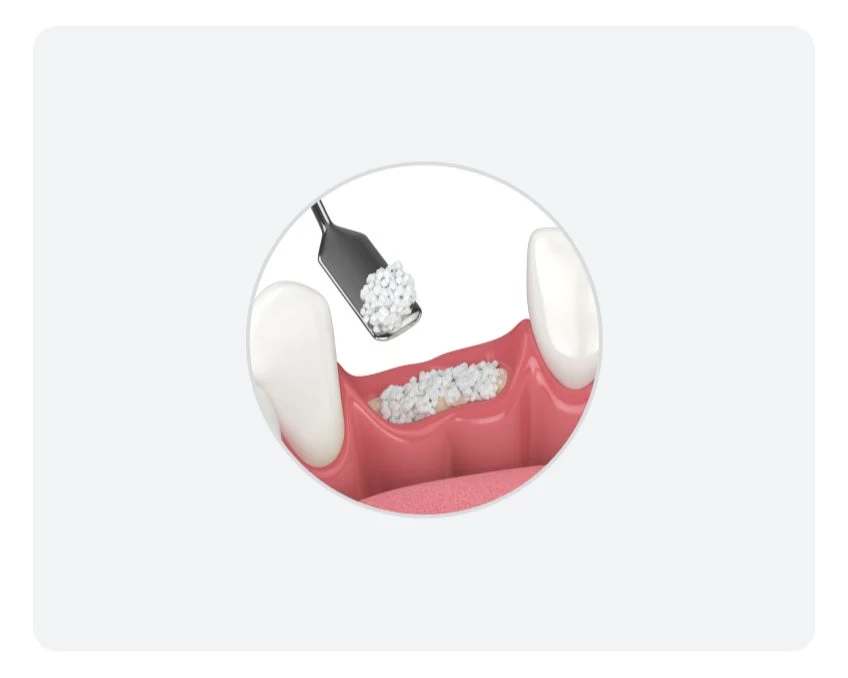Dental implant procedure: What you should know
The dental implant process doesn’t have to be scary. Here’s what you need to know beforehand.
Dental implants are a great way to restore your smile. At Aspen Dental, we take pride in our ability to make this process as smooth and comfortable as possible for our patients, to ensure lasting results.
How long does the dental implant process take?
The entire dental implant process, from consultation to final restoration, can take several months, with the actual implant placement usually taking about 1-2 hours. However, same-day dental implants, though they require a few consultation and preparation visits, allow for the implants to be placed and restored in a single day.
What to do prior to your dental implant procedure
Getting ready for your dental implant procedure involves a few essential steps to ensure everything goes smoothly.
Consultation
Your journey begins with a thorough consultation with your Aspen Dental dentist. This involves a comprehensive dental exam, X-rays, and sometimes a 3D scan of your mouth and bone to plan the placement of your implants precisely.
Health check
Ensure you have shared your complete medical history, including any medications or supplements you are taking. Your dentist needs this information to avoid complications.
Pre-procedure instructions
Follow any specific instructions given by your dentist. This may include fasting, if pain management treatments will be used.
Oral hygiene
Maintain excellent oral hygiene in the days leading up to the procedure. Brush and floss regularly to minimize the risk of infection. A professional dental cleaning might be recommended to ensure your mouth is free of plaque and bacteria.
Medication
Your dentist may prescribe antibiotics or anti-inflammatory medications to prevent infection and reduce swelling.
Transportation
Arrange for someone to drive you to and from the appointment, especially if sedation is involved.
Before the procedure (tooth treatment)
Here's what you can expect before the treatment:

Pain management treatment
Pain management treatments are applied to numb the area where the implant will be placed. Sedation may also be used for your comfort.

Extraction of damaged tooth
Your dentist will remove any agreed upon damaged or decayed tooth that needs replacement.

Bone grafting (if needed)
In cases where the jawbone lacks sufficient density, a bone graft may be performed to provide a solid foundation for the implant. This involves adding bone material to strengthen the implant site.
During the procedure (tooth treatment)
The dental implant procedure itself is a multi-step process that typically involves the following:
Incision and jawbone preparation
The dentist will make a small incision in the gum tissue to expose the jawbone. This step allows for the precise placement of the implant.
Drilling the implant site
Using specialized dental instruments, the dentist will carefully drill a hole into the jawbone at the predetermined site. This step is crucial for creating a space to insert the dental implant.
Suturing the incision
The dentist will suture the gum tissue back over the implant site to protect it during the healing process, and so it has time to integrate to the bone. These stitches may dissolve on their own or require removal at a follow-up appointment.
Final crown or healing cap
Depending on the treatment plan, a final crown or healing cap is placed on the implant. The final crown provides a functional and aesthetic solution while the implant integrates with the jawbone.
Post-dental implant procedure
Post-procedure care is crucial for the success of your dental implant. Here’s what to expect:

Healing period
Healing typically takes a few months as the implant integrates with the jawbone. This process is called osseointegration.

Pain management
It’s normal to experience some swelling and discomfort after the procedure. Over-the-counter pain relievers and ice packs can help manage these symptoms.

Diet adjustments
Stick to a soft food diet for the first few days. Avoid hard, crunchy, or sticky foods that might disturb the implant site.
Doctor instructions post-procedure
Your Aspen Dental dentist will provide specific instructions to help ensure your implant heals properly, while you get used to them. First, keep the implant site clean by gently brushing and rinsing with an antimicrobial mouthwash. Attend all scheduled follow-up appointments to monitor the healing process and address any concerns. Lastly, avoid putting excessive pressure on the implant site by not chewing hard foods or using that side of your mouth until fully healed.
Potential complications and failures
While dental implants generally have a high success rate, complications can sometimes occur. Infections may develop if the implant site isn’t kept clean, so it’s imperative that you follow your dentist’s hygiene instructions carefully. On rare occasions, the implant may not integrate with the jawbone and might need to be removed.
Breaking down the dental implant procedure process
Get to know the before, during, and after of a dental implant procedure.
Dental implant procedure FAQs
How long does a dental implant take?
The entire dental implant process, from consultation to final restoration, can take several months. The actual implant placement usually takes about 1-2 hours, depending on the number of implants being placed.
Is the dental implant procedure painful?
Pain management treatment options minimize discomfort during the procedure. Some post-operative soreness is normal and can be managed with pain relievers.
What can I eat after a dental implant procedure?
Stick to soft foods like yogurt, mashed potatoes, and soups for the first few days. Gradually reintroduce harder foods as the implant heals.
How do I care for my dental implant?
Maintain excellent oral hygiene by brushing twice a day and flossing daily. Use an antimicrobial mouthwash and attend regular dental check-ups.
Can anyone get dental implants?
Most people with good overall health and adequate jawbone density are candidates for dental implants. Your dentist will determine your suitability during the consultation.
What are the risks associated with dental implants?
While rare, risks include infection, implant failure, and nerve damage. Following your dentist’s instructions can help minimize these risks.
How long do dental implants last?
With proper care, dental implants can last a lifetime. Regular dental visits and good oral hygiene are key to their longevity.
What can I eat after a dental implant procedure?
Stick to soft foods like yogurt, mashed potatoes, and soups for the first few days. Gradually reintroduce harder foods as the implant heals.
Explore our dental resources
Say goodbye to tooth pain today
Don’t endure tooth pain any longer. Schedule an appointment with your Aspen Dental care team.



